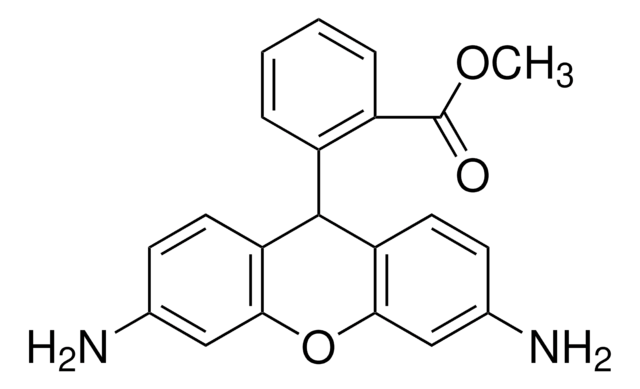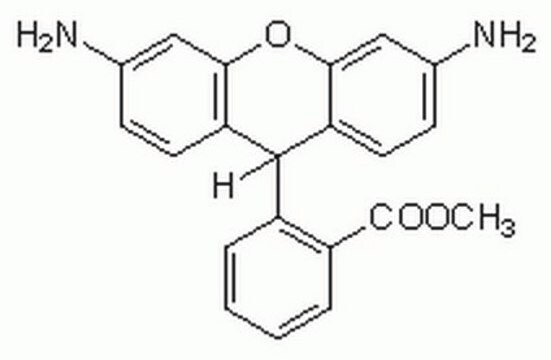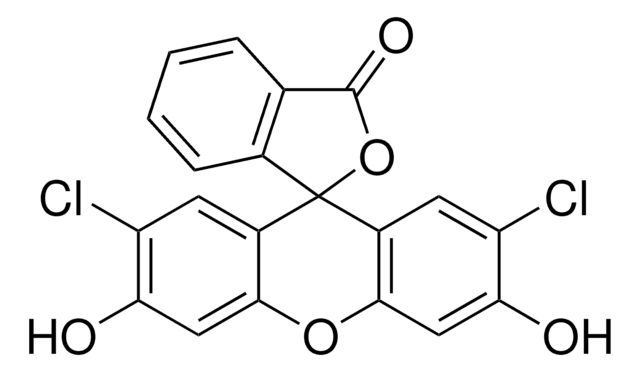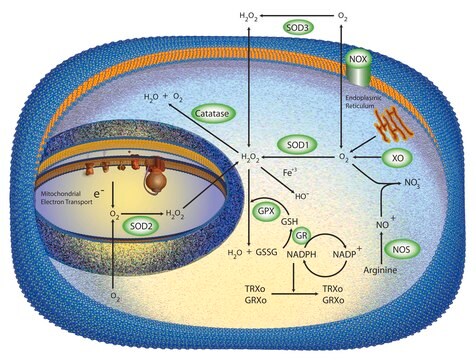309800
Dihydroethidium
A cell-permeable, chemically-reduced ethidium derivative.
Synonyme(s) :
Dihydroethidium, 2,7-Diamino-10-ethyl-9-phenyl-9,10-dihydrophenanthridine, DHE
About This Item
Produits recommandés
Niveau de qualité
Description
RTECS - SF7935000
Essai
≥95% (HPLC)
Forme
solid
Fabricant/nom de marque
Calbiochem®
Conditions de stockage
OK to freeze
protect from light
Couleur
pink
Solubilité
DMSO: 20 mg/mL
DMF: soluble
Conditions d'expédition
ambient
Température de stockage
−20°C
Chaîne SMILES
Nc1c2c(cnc1)c3c(cc(cc3)N)C(C2CC)c4ccccc4
InChI
1S/C21H21N3/c1-2-15-20(13-6-4-3-5-7-13)17-10-14(22)8-9-16(17)18-11-24-12-19(23)21(15)18/h3-12,15,20H,2,22-23H2,1H3
Clé InChI
ZDWPSSBKIMIPMY-UHFFFAOYSA-N
Catégories apparentées
Description générale
Actions biochimiques/physiologiques
Useful fluorogenic probe for the detection of reactive oxygen species (ROS)
Conditionnement
Avertissement
Reconstitution
Autres remarques
Mancini, M., et al. 1997. J. Cell Biol.138, 449.
Carter, W.O., et al. 1994. J. Leukoc. Biol.55, 253.
Cinco, M., et al. 1994. FEMS Microbiol. Lett. 122, 187.
Perticarari, S., et al. 1994. J. Immunol. Methods 170, 117.
Perticarari, S., et al. 1991. Cytometry 12, 687.
Bucana, C.D., et al. 1990. Exp. Cell Res.190, 69.
Rothe, G., and Valet, G. 1990. J. Leukoc. Biol.47, 440.
Informations légales
Code de la classe de stockage
11 - Combustible Solids
Classe de danger pour l'eau (WGK)
WGK 3
Certificats d'analyse (COA)
Recherchez un Certificats d'analyse (COA) en saisissant le numéro de lot du produit. Les numéros de lot figurent sur l'étiquette du produit après les mots "Lot" ou "Batch".
Déjà en possession de ce produit ?
Retrouvez la documentation relative aux produits que vous avez récemment achetés dans la Bibliothèque de documents.
Les clients ont également consulté
Notre équipe de scientifiques dispose d'une expérience dans tous les secteurs de la recherche, notamment en sciences de la vie, science des matériaux, synthèse chimique, chromatographie, analyse et dans de nombreux autres domaines..
Contacter notre Service technique










